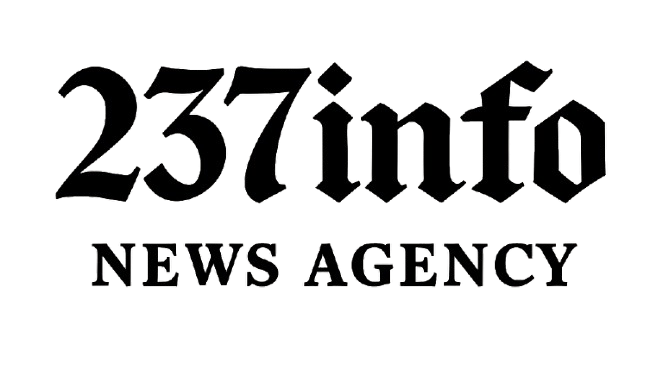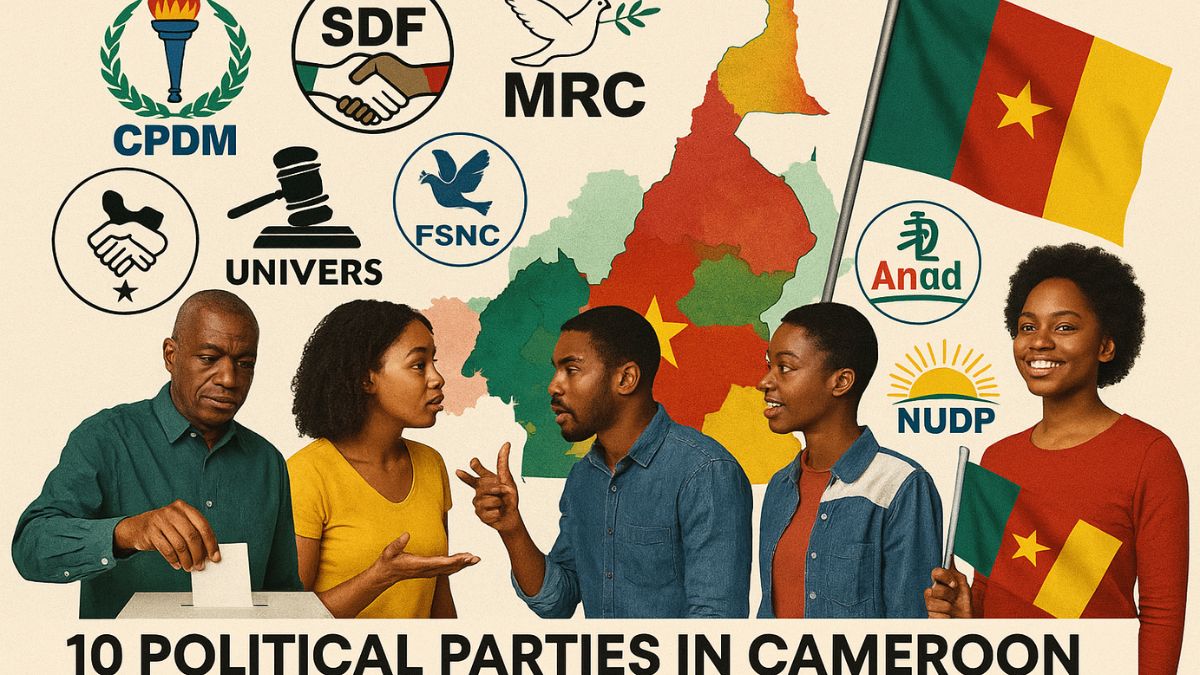Cameroon’s political landscape is a complex mosaic shaped by its colonial past, diverse ethnic composition, and decades of centralized governance. Though it operates under a multi-party system, political power in Cameroon has long been dominated by one major force. However, the existence of over 330 registered political parties reflects a vibrant—if often fragmented—democratic space. For anyone interested in Cameroonian politics, understanding the key players is essential.
This article highlights 10 political parties in Cameroon you should know, from ruling giants to emerging challengers. It explores their origins, ideologies, and current influence on the national stage.
The Dominant Force: Cameroon People’s Democratic Movement (CPDM)
The Cameroon People’s Democratic Movement (CPDM), known in French as Rassemblement Démocratique du Peuple Camerounais (RDPC), has ruled the country since 1985. Formerly the Cameroon National Union, it was rebranded by President Paul Biya, who remains its long-standing leader.
The CPDM is a center-right political party often described as nationalist and pro-francophone. Under its leadership, Cameroon transitioned into a multi-party democracy—at least in name—but the CPDM has retained a strong grip on power through strategic alliances, control of state institutions, and extensive patronage networks. It currently holds an overwhelming majority in both the National Assembly and Senate.
Despite criticisms of authoritarian tendencies, electoral manipulation, and human rights abuses, the CPDM remains the most organized and resourceful party in the country.
The Traditional Opposition: Social Democratic Front (SDF)
The Social Democratic Front (SDF) was founded in 1990 by the late Ni John Fru Ndi, a key figure in Cameroon’s democratic struggle. As the first major opposition party in the post-single-party era, the SDF quickly gained popularity, especially in the Anglophone regions of Northwest and Southwest.
The SDF advocates for social democracy, federalism, and stronger democratic institutions. In the 1992 presidential election, Fru Ndi nearly defeated Paul Biya, sparking hope among reformists. However, over the years, the party has faced internal divisions, leadership struggles, and waning support, especially amid the escalating Anglophone crisis.
Today, the SDF still retains some influence in Parliament and local councils but is far from its former glory. Its current leader, Joshua Osih, aims to rejuvenate the party’s relevance in a changing political climate.
A Northern Ally: National Union for Democracy and Progress (UNDP)
Founded in 1991, the National Union for Democracy and Progress (UNDP) emerged as a strong political voice from the Northern regions of Cameroon. Led by Bello Bouba Maigari, a former prime minister, the party initially positioned itself as a reformist alternative.
Although it started as an opposition party, the UNDP later aligned itself with the ruling CPDM, forming coalition governments and endorsing Biya in successive elections. This strategic partnership has kept it politically relevant, but critics argue that it compromised its independence and original mission.
The UNDP maintains a modest number of parliamentary seats and remains influential in the North, especially in regions where ethnic and regional representation matters greatly in politics.
Decentralization Advocates: Cameroon Democratic Union (CDU)
The Cameroon Democratic Union (CDU), established in 1991 by legal scholar Adamou Ndam Njoya, has long promoted decentralization, constitutional reforms, and transparent governance. The CDU has consistently participated in elections and maintains a loyal base in the West Region.
Ndam Njoya, until his death, was a respected voice for political moderation and civic responsibility. The party now aims to carry forward his legacy under new leadership, though it faces challenges in terms of funding, media exposure, and national reach.
While not a major player in terms of seats, the CDU continues to influence political discourse, particularly around issues of decentralization and electoral fairness.
The Historical Struggle: Union of the Peoples of Cameroon (UPC)
The Union of the Peoples of Cameroon (UPC) holds a unique place in the country’s history. Founded in 1948, it led the anti-colonial movement against French rule and advocated for reunification of British and French Cameroons. Its early leaders, such as Ruben Um Nyobé and Félix-Roland Moumié, became martyrs of the independence struggle.
After being banned and operating in exile, the UPC was legalized again in the 1990s. However, internal divisions and decades of suppression have reduced its political weight. Today, the UPC holds minimal parliamentary influence and has, controversially, allied itself with the CPDM in recent elections.
Despite its decline, the UPC remains a powerful symbol of Cameroon’s nationalist history and ideological resistance to neocolonialism.
A Voice for Reform: Cameroon Renaissance Movement (MRC)
The Cameroon Renaissance Movement (MRC), or Mouvement pour la Renaissance du Cameroun, was founded in 2012 by Professor Maurice Kamto, a former Biya ally turned opposition leader.
The MRC gained national prominence during the 2018 presidential elections, where Kamto declared victory before official results confirmed Biya’s re-election. The party has since become a strong voice for electoral reform, anti-corruption, and political accountability. However, it has faced significant repression, with arrests of supporters and bans on rallies.
Though it lacks representation in Parliament—due in part to boycotts and controversial disqualifications—the MRC is seen by many as the most dynamic and promising opposition force in Cameroon today.
Emerging Youth and Urban Movements: PURS and UMS
Two newer parties gaining traction, especially among younger voters and urban populations, are the United People for Social Renovation (PURS) and the Union of Socialist Movements (UMS).
PURS, led by Serge Espoir Matomba, emphasizes social justice, job creation, and sustainable development. Known for his direct style and policy-driven approach, Matomba contested the 2018 presidential election and continues to build a grassroots following.
UMS, under Pierre Kwemo, is a socialist-oriented party advocating wealth redistribution, education, and rural development. Kwemo plans to contest the 2025 presidential election, positioning UMS as a serious leftist alternative to mainstream parties.
Though both parties currently lack legislative power, their influence is growing, especially as younger Cameroonians become more politically conscious and frustrated with the status quo.
Political Satellites and Strategic Alliances: MDR and APAR
Not all parties in Cameroon are created equal—some serve strategic roles in supporting the ruling party or dividing opposition votes. Two such examples are the Movement for the Defence of the Republic (MDR) and the Patriotic and Republican Alliance (APAR).
The MDR, led by Dakolé Daïssala, has long aligned with the CPDM in parliamentary coalitions and presidential endorsements. While it retains a small number of seats, its relevance lies in regional influence and its role in coalition politics.
APAR, founded by former SDF member Célestin Djamen, positions itself as a reformist party with patriotic values. Though relatively new and small, it is vocal in its criticism of both the ruling party and fragmented opposition.
These parties demonstrate how Cameroon’s political scene often functions through tactical alliances, power-sharing deals, and strategic fragmentation.
Conclusion
Cameroon’s multi-party system is both a sign of democratic aspiration and political complexity. While the CPDM maintains dominance, opposition parties—from the historical SDF and UPC to the emerging MRC, PURS, and UMS—continue to press for change in governance, decentralization, and civic rights.
Understanding these 10 political parties in Cameroon offers insight into the country’s political balance, the challenges of democratic consolidation, and the shifting dynamics ahead of the crucial 2025 presidential election. As the political climate intensifies, the role of these parties—old and new—will be instrumental in shaping the future of Cameroon.

